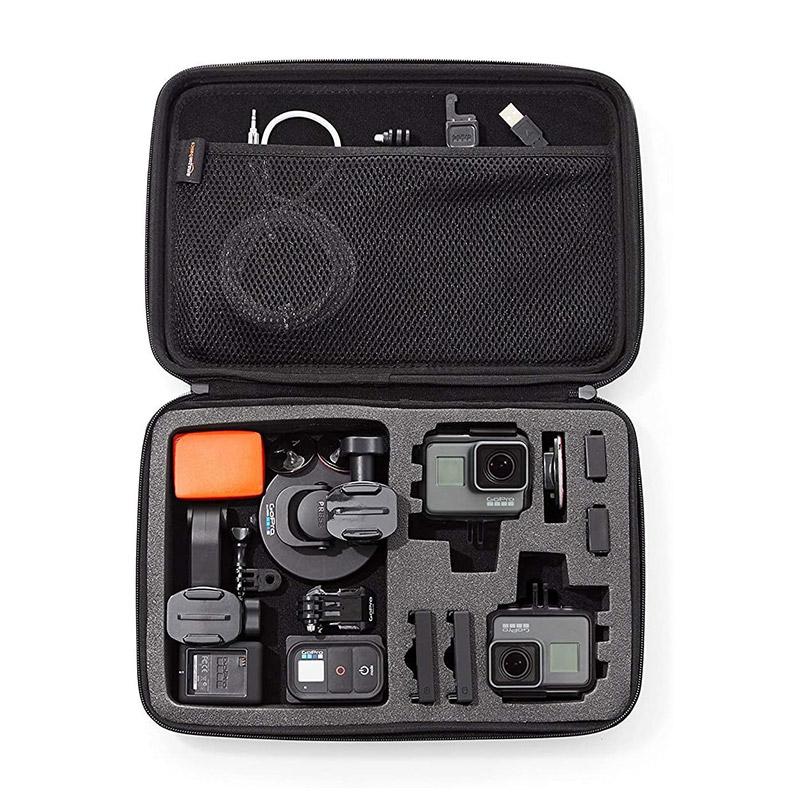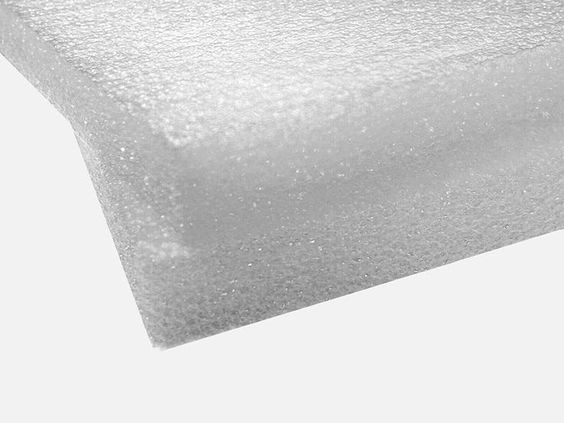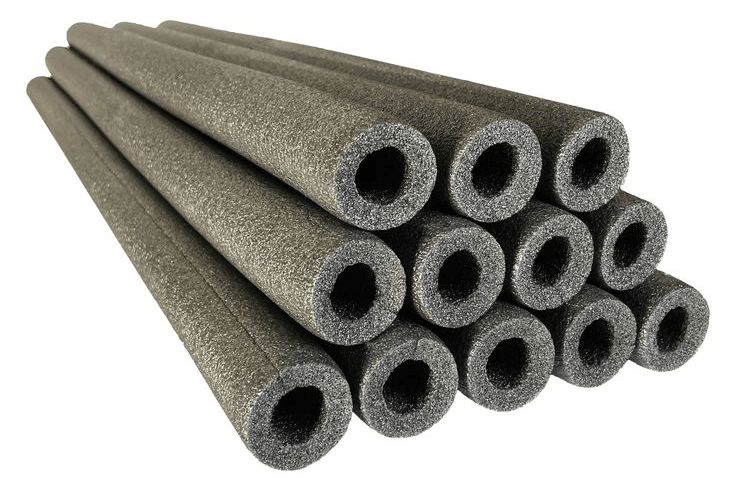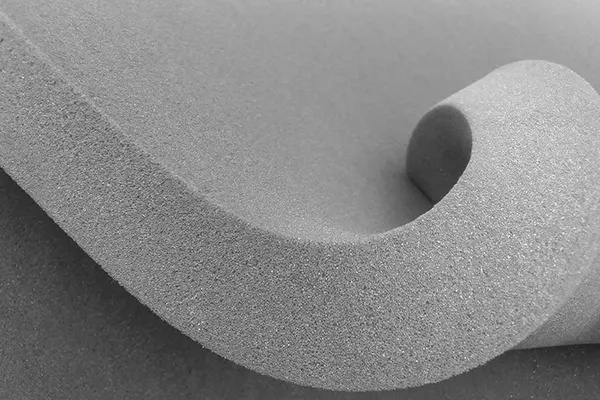프로젝트에 적합한 유형의 폼을 선택할 때, EVA FOAM과 PE FOAM은 종종 고려되는 두 가지 인기있는 옵션입니다.. 이 두 자료에는 서로 구별되는 뚜렷한 특성이 있습니다., 다른 응용 프로그램에 적합하게 만듭니다. 이 기사에서, EVA 폼과 PE 폼의 차이점을 조사하여 특정 요구에 대한 정보에 근거한 결정을 내릴 수 있습니다..
에바 폼이란??

에바 폼, 에틸렌 비닐 아세테이트 폼의 경우, 탄력성과 내구성으로 유명한 다목적 재료입니다.. 쿠션 및 충격 흡수 특성을 제공하는 폐쇄 셀 폼입니다., 광범위한 응용 프로그램에 이상적입니다. EVA 폼은 일반적으로 스포츠 장비와 같은 산업에서 사용됩니다., 포장, 가벼운 특성과 사용자 정의의 용이성으로 인한 제작.
에바 폼은 무엇으로 만들어졌습니다?
에바 폼은 구성되어 있습니다 에틸렌 및 비닐 아세테이트 공중 합체, 고유 한 특성을 가진 재료를 만들기 위해 함께 혼합됩니다.. 이 두 화합물의 조합은 부드러운 폼을 만듭니다., 유연한, 그리고 균열과 눈물에 저항합니다. EVA 폼은 다양한 밀도와 두께로 제조하여 다른 요구와 요구 사항을 충족시킬 수 있습니다..
Eva 폼이 무엇입니까??

Eva Foam. 그것은 일반적으로 생산에 사용됩니다 스포츠 매트, 요가 블록, 신발 안창, 보호 패딩. 또한, 에바 폼이 사용됩니다 깨지기 쉬운 품목을 보호하기위한 포장 배송 및 취급 중. 가볍고 충격 흡수 특성은 인기있는 선택입니다. EVA 폼 케이스.
- 스포츠 매트
- 요가 블록
- 신발 안창
- 헬멧 라이너, 무릎 패드, 그리고 팔꿈치 패드
- 코스프레 의상, 모델 제작, 그리고 DIY 홈 장식
- 어린이 장난감, 퍼즐, 그리고 게임
- 섬세한 품목을 보호하기위한 맞춤형 인서트
- 정형 외과 지원, 보철 패딩, 휠체어 쿠션
- 방음 패널
- 떠 다니는 매트
PE 폼이란 무엇입니까??

거품에, 또는 폴리에틸렌 폼, 다양한 산업에서 널리 사용되는 또 다른 유형의 폼 재료입니다.. PE 폼은 부드러움과 유연성으로 유명한 폐쇄 셀 폼입니다.. 화학 물질과 수분에 내성이 있습니다, 방수 및 내구성이 필요한 응용 프로그램에 이상적. PE 폼은 일반적으로 사용됩니다 포장, 격리, 쿠션 응용 분야.
PE 폼으로 만든 것은 무엇입니까??
PE 폼이 만들어졌습니다 폴리에틸렌, 강인성과 유연성으로 유명한 열가소성 물질. 폴리에틸렌 폼은 일련의 공정을 통해 중합체를 압출하여 균일 한 세포 구조를 갖는 폼 재료를 형성함으로써 생성된다.. 결과 폼은 가볍습니다, 부드러운, 그리고 탄력성, 광범위한 응용 프로그램에 적합합니다.
PE 폼이란 무엇입니까??

PE 폼은 다양한 목적으로 다양한 산업에서 사용되는 다목적 재료입니다.. 일반적으로 사용됩니다 포장 운송 중 쿠션 및 섬세한 품목에 대한 보호를 제공하려면. PE 폼도 사용됩니다 단열 목적을위한 건축 산업 열 및 음향 특성으로 인해. 게다가, PE 폼에서 사용됩니다 건전한 단열 및 진동 감쇠를위한 자동차 산업.
- 포장 인서트
- 절연 시트
- 쿠션 소재
- 자동차 사운드 단열재
- 파이프 단열재
- HVAC 덕트 절연
- 부유 장치
- 보호 포장
- 바닥을위한 하층
- 의료 중괄호
EVA 대. 거품에, 차이점은 무엇입니까??
EVA 폼과 PE 폼을 비교할 때, 그것들을 구별하는 몇 가지 주요 차이점이 있습니다.
| 재산 | 에바 폼 | 거품에 |
| 내구성 | 균열과 눈물에 대한 우수한 저항 | 구멍과 눈물을 흘리기 쉽습니다 |
| 유연성 | 높은 유연성과 부드러움 | 유연하지만 약간 덜 유연합니다 |
| 방수 | 수분에 적당히 저항합니다 | 수분에 저항하고 물을 흡수하지 않습니다 |
| 충격 흡수 | 우수한 충격 흡수 특성 | 충격 흡수 능력이 우수합니다 |
| 온도 저항 | -20 ° C ~ 70 ° C의 온도를 견딜 수 있습니다 | 광범위한 온도를 견딜 수 있습니다 |
| 화학 저항 | 화학 물질에 적당히 저항력이 있습니다 | 산과 알칼리에 대한 탁월한 저항 |
| 비용 | 약간 더 비쌉니다 | 보다 저렴한 옵션 |
내구성 비교
내구성 측면에서, EVA 폼과 PE 폼은 모두 정기적 인 마모를 견딜 수있는 탄력성 재료입니다.. 하지만, Eva Foam은 균열과 눈물에 대한 우수한 저항으로 유명합니다., 장기 용도로 더 내구성있는 옵션으로 만듭니다. 거품에, 반면에, 더 부드러운 성격으로 인해 구멍과 눈물이 발생할 수 있습니다..
유연성 테스트
유연성 측면에서, Eva Foam은 유연성이 높은 것으로 유명합니다., 다양한 형태로 쉽게 만들고 형성 할 수 있도록. 거품에, 유연하지만, EVA 폼보다 약간 덜 유연 할 수 있습니다, 더 단단한 재료가 필요한 응용 프로그램에 더 적합하게 만듭니다.. 두 폼을 쉽게자를 수 있습니다, 굽은, 특정 요구 사항에 맞게 형성되었습니다.
방수
방수에 관해서는, PE 폼은 폐쇄 세포 구조와 소수성 특성으로 인해 EVA 폼보다 가장자리가 있습니다.. PE 폼은 수분에 강하고 물을 흡수하지 않습니다., 물 손상으로부터 보호가 필요한 응용 프로그램에 이상적인 선택입니다.. 에바 폼, 어느 정도 방수가 있습니다, 시간이 지남에 따라 수분을 흡수 할 수 있습니다, 습한 조건에 대한 장기 노출에 적합하지 않음.
충격 흡수
EVA 폼은 우수한 충격 흡수 특성으로 유명합니다., 충격 저항이 필요한 응용 프로그램에 인기있는 선택으로. EVA 폼의 폐쇄 세포 구조를 통해 압축하고 다시 튀어 나올 수 있습니다., 충격을 흡수하고 섬세한 품목을 손상으로부터 보호합니다. PE 폼은 또한 우수한 충격 흡수 기능을 제공합니다, 하지만 충격이 높은 상황에서 EVA 폼만큼 효과적이지 않을 수 있습니다..
온도 저항
EVA 폼과 PE 폼 모두 우수한 온도 저항을 나타냅니다., 모양이나 특성을 잃지 않고 광범위한 온도를 견딜 수 있습니다.. EVA 폼은 -20 ° C ~ 70 ° C 범위의 온도를 견딜 수 있습니다., 실외 응용 프로그램 및 극한 기상 조건에 적합하게. PE 폼의 온도 범위는 비슷합니다, 열 안정성이 필요한 애플리케이션을위한 다목적 재료로.
화학 저항
PE 폼은 우수한 화학 저항성으로 유명합니다, 가혹한 화학 물질 및 용매에 노출되는 응용 분야에 이상적입니다.. PE 폼은 산에 내성이 있습니다, 알칼리, 그리고 다른 부식성 물질, 화학 저장 및 운송을위한 안정적인 선택. 에바 폼, 화학 물질에 적당히 저항력이 있습니다, 특정 용매 및 산에 노출 될 때 분해가 발생하기 쉬울 수 있습니다..
비용 비교
비용면에서, PE 폼은 일반적으로 제조 공정 및 원료 비용의 차이로 인해 EVA 폼보다 저렴합니다.. PE FOAM. 에바 폼, 약간 비싸지 만, 우수한 충격 흡수 및 내구성을 제공합니다, 고성능 폼 재료를 요구하는 응용 프로그램에 선호되는 선택입니다..
에바 폼 대. 거품에: 더 낫습니다?

EVA 폼과 PE 폼 사이의 선택은 궁극적으로 프로젝트의 특정 요구에 달려 있습니다.. 고 충격적인 응용 분야를 위해 우수한 충격 흡수 및 쿠션이 필요한 경우, EVA 폼이 더 나은 옵션 일 수 있습니다. 하지만, 방수 및 화학 저항이 프로젝트의 주요 고려 사항 인 경우, PE 폼이 선호되는 선택 일 수 있습니다.
공모
결론적으로, EVA 폼 및 PE 폼은 광범위한 응용 분야에 고유 한 특성과 이점을 제공하는 두 가지 다목적 재료입니다.. EVA 폼은 우수한 충격 흡수 및 쿠션 특성으로 가치가 있습니다., 스포츠 장비에 이상적입니다, 보호 패딩, 그리고 제작 응용 프로그램. 거품에, 반면에, 방수 및 화학 저항으로 유명합니다, 포장에 적합합니다, 격리, 쿠션 응용 분야. EVA 폼과 PE 폼을 선택할 때, 프로젝트의 특정 요구 사항을 고려하고 귀하의 요구에 가장 적합한 폼 재료를 선택하십시오..
















